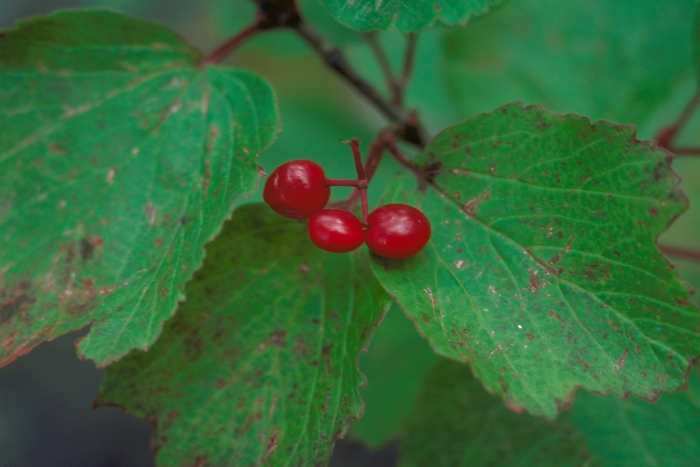Squashberry
(Viburnum edule)
Squashberry (Viburnum edule)
/
/

Dave Powell, USDA Forest Service
CC BY 3.0 us






















































Estimated Native Range
Summary
Squashberry is valued for its wildlife-friendly attributes, edible fruit, and attractive fall foliage. It is used in naturalistic plantings, as a component of wildlife gardens, and for erosion control in wetland areas. This shrub thrives in moist, well-drained alluvial soils and can tolerate a range of drainage conditions. It prefers full sun but can also grow in part shade. While generally low-maintenance, it can be susceptible to leaf spot diseases and may require pruning to maintain its shape. Squashberry is not known for aggressive roots or significant invasiveness issues.CC BY-SA 4.0
Plant Description
- Plant Type: Shrub
- Height: 2-12 feet
- Width: 2-8 feet
- Growth Rate: Rapid
- Flower Color: White
- Flowering Season: Spring, Summer
- Leaf Retention: Deciduous
Growth Requirements
- Sun: Full Sun, Part Shade
- Water: Medium
- Drainage: Fast, Medium, Slow
Common Uses
Bee Garden, Bird Garden, Butterfly Garden, Deer Resistant, Edible*Disclaimer: Easyscape's listed plant edibility is for informational use. Always verify the safety and proper identification of any plant before consumption., Hummingbird Garden, Low Maintenance, Rabbit Resistant
Natural Habitat
Cool, moist forests and wetlands of subarctic and boreal regions of North America
Other Names
Common Names: Highbush Cranberry , Mooseberry , Moosomin , Pembina , Lowbush Cranberry , Moosewood Viburnum , Squashberry Viburnum , Pimbina , Viorne Comestible
Scientific Names: Viburnum edule , Viburnum pauciflorum , Viburnum eradiatum , Viburnum opulus var. edule , Viburnum opulus var. eradiatum , Viburnum opulus var. pauciflorum
GBIF Accepted Name: Viburnum edule (Michx.) Raf.